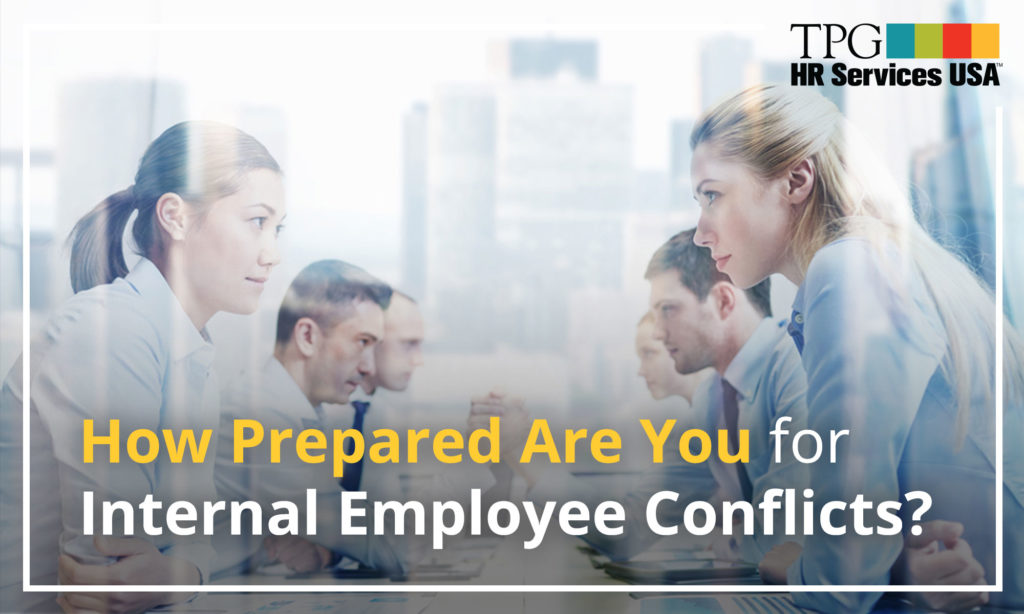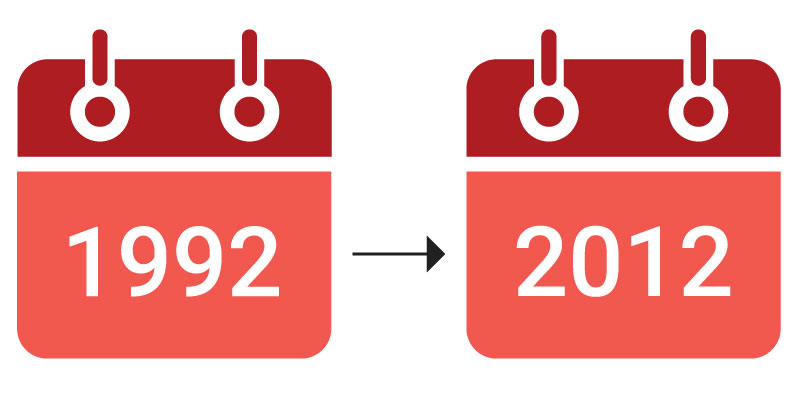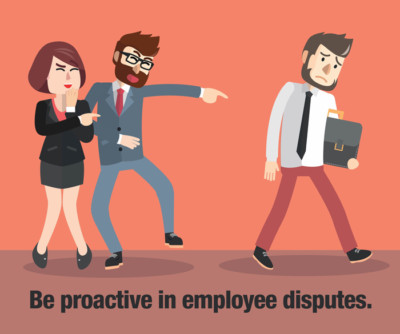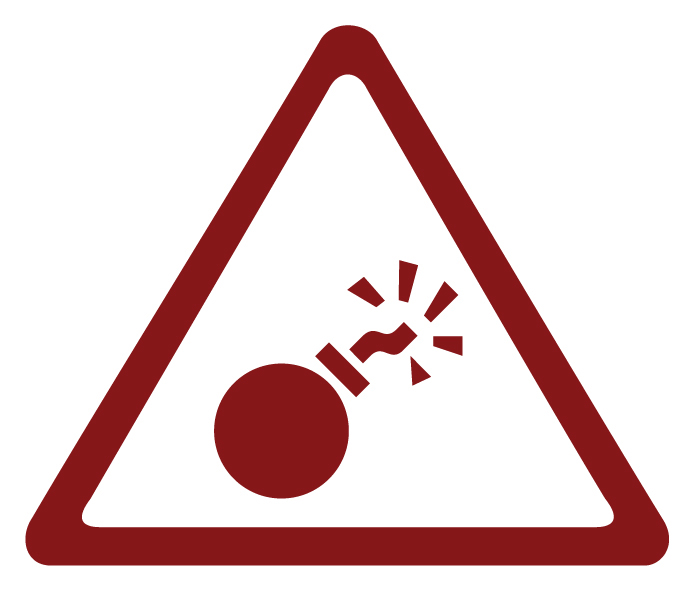
How Prepared Are You for Internal Employee Conflicts?

Ms. Pomerantz is the CEO of TPG HR Services USA and has over 35 years of Human Resources practices experience. She holds a Master’s in Human Resource Management (MHRM) and is a certified Senior Professional in Human Resources (SPHR) and SHRM Senior Certified Professional (SHRM-SCP). Mary also serves as CEO of Mary Pomerantz Advertising, one of the largest recruitment advertising agencies in the country. Earlier in her career, she was president of the 17th largest staffing firm in the country.

In a perfect world, all of your employees would get along with each other, they would never have a dispute with management, and your workplace would run as peacefully as a church sermon. Unfortunately, when large groups of people interact with each other for 40 or more hours per week, employee conflicts are bound to happen.
The key to defusing employee conflicts begins with effective leadership. Many times, supervisors and managers are unsure of how to handle these inevitabilities. Whether it’s over something as simple as a parking space or eating someone else’s food in the fridge – or it involves something serious like an employee not shouldering his fair share of work – it’s up to you to step in and subdue the situation. [1]

Workplace Conflict can Quickly Escalate into Workplace Violence

Overall, roughly 2 million workers a year are affected by some form of workplace violence, from verbal abuse to physical assaults to homicide. [2]

Of the 5,147 fatal workplace injuries in the US in 2017, 458 were intentional injuries by another person. [3]

Between 1992 and 2012, there were 14,770 workplace homicide victims or roughly 700 a year on average. [2]

Acts of violence are currently the third-leading cause of fatal occupational injuries in the United States. [3]

Violence is the leading cause of death for women in the workplace, oftentimes connected to domestic violence. [4]
Factors that Increase Workplace Violence Risk

- Exchanging money with the public
- Working with unstable individuals
- Working alone or in isolated areas
- Working in areas where alcohol is served
- Working late at night
Workplace Violence Defined
The Occupational Safety & Health Administration (OSHA) is the primary U.S. organization that tracks the safety of employees in the workplace. Its definition of workplace violence includes “any act or threat of physical violence, harassment, intimidation, or other threatening disruptive behavior that occurs at the worksite. It ranges from threats and verbal abuse to physical assaults and even homicide. It can affect and involve employees, clients, customers, and visitors.”
Occupations considered to be at a higher than average risk of experiencing workplace violence include delivery drivers, healthcare professionals, public service workers, customer service agents, and law enforcement personnel. [5]

Even Non-Violent Internal Employee Conflicts Still Hurt Morale
Sometimes even hidden internal employee conflicts which you may not even be aware of can still have an extremely negative effect on workforce morale. This, in turn, can negatively impact the productivity and retention of your workforce. When employees feel “picked on” or disrespected – or simply see their co-workers being treated in these ways – it can make them far less likely to produce at their peak level of performance. This kind of internal employee conflict can also make it difficult for groups of employees to work together, as individual employees may begin to assemble into “warring tribes” whose membership makes any project more difficult to complete if employees must work together across these “tribal lines.”
“People usually quit or leave their jobs because they have reached the absolute pinnacle of frustration. They may not show it. They may not display it. They may have great emotional intelligence, but they may not be able to say, ‘Oh look, I’m really frustrated’ [to their managers].”
Caroline Stokes, executive headhunter at talent acquisition firm FORWARD
Source: Tech Republic
In addition, the constant stress of unaddressed conflict can have a draining effect on all employees who are aware of it (not limited to those who are directly involved in a dispute), making it much more likely that employees will seek employment elsewhere in an effort to reduce their daily stress exposure. In this way, unresolved employee conflicts can cause you to lose employees (and your investment in them) who are critical to the success of your company. That’s why it is critical that you keep an eye out for the signs of any brewing employee conflicts and address them immediately before they turn into something worse or cause negative consequences throughout your workforce.
How to Spot the Warning Signs of Internal Employee Conflict
In order to address internal employee conflicts before they spiral out of control, you need to be able to spot the warning signs. But, what is the best way to do that on a consistent basis? The simple answer is that you need to make sure that your managers are “hands-on” and “wired-in” to their team members’ interpersonal relationships at work. Managers who are aloof or disconnected from their employees will often be surprised by workplace conflicts that, in hindsight, should have been easy to spot brewing in the earliest stages. Employee conflicts, like most elements of business, are best handled proactively by managers who know the warning signs to look for and are prepared to step in before things escalate. According to the conflict resolution experts at Resologics, the following 9 signs are the most common indicators that employee conflict may be on the horizon if supervisors don’t step in to address the issue now. [6]

Nine Signs an Internal Employee Conflict is Building
- Dysfunctional meetings: If your meetings tend to devolve into litanies of complaints or get dominated by some employees while others “tune out” internal employee conflicts may be in your future. Paying attention to the group dynamics at meetings is critical.
- Anger: Displaying anger, particularly when it seems like an over-reaction, needs to be addressed immediately and is often the result of a pattern of perceived slights or unfair treatment that needs to be identified.
- Productivity slowdowns: If there has been a decline in your company’s productivity it may be the consequence of a building employee conflict of which you aren’t aware. Investigate any slowdowns to determine the potential root causes.
- High turnover: Employees rarely pack up and leave a position on a whim, and the most common reason for leaving is a negative experience with a supervisor or co-workers. If you have high employee turnover you need to understand the conflicts driving it.
- Inappropriate communications: Rudeness, in workplace speech or other communications such as emails, can spawn resentment that builds over time and may erupt in a variety of negative ways down the line. Make sure your employee communications are always respectful and appropriate.
- Anxiety: Some individuals are simply naturally more anxious than others, but anxiety can also be a symptom of brewing employee conflicts that have not been addressed. If an employee seems especially anxious it may be helpful to find out the root cause.
- Clique forming: Teamwork is critical to the success of any organization. But, when employees begin forming cliques that exclude others, it can lead to tension between different groups on your staff that can work against the company’s mission and values. Cliques generate conflicts over time.
- Repetitive disagreements: If the same two employees always seem to disagree, no matter how petty or unimportant the topic, there is probably an underlying issue that needs to be brought out into the open and worked out before it leads to serious conflict.
- Loss of trust: Trust between employees or between employees and management is an essential component of any company’s ability to succeed. Employees who can’t trust one another or who chronically distrust management are a toxic and potentially volatile situation waiting to explode. [6]
What to Do When Employees Don’t Get Along
Though most employee conflicts will not end in violence, it’s a good idea to be proactive in your management of conflicts rather than reactive. You don’t want your first action to come after a shouting match has ensued; you want to step in long before then and stop things from getting out of hand before they start.
Here are some tips for dealing with employee conflicts:

- Try and let employees work it out first: You’re their boss, not their parent. You should encourage your employees to settle their disputes among themselves if possible. If you determine the situation is not too emotionally charged and both parties feel comfortable talking it out, you could reduce the potential drama by not getting involved.
- Nip it in the Bud: If you find that the employees will not be able to work things out themselves, don’t wait to take action. Waiting too long will allow the conflict to fester and potentially involve other workers.
- Be Fair and Objective: Playing favorites at this point will only make the situation worse and potentially alienate other workers in your office. Don’t assume you know the whole story; don’t assume you know who’s at fault. Listen to both sides of the story before making any decisions.
- Put it in Writing: Your workers won’t be big fans, but it’s important to document each workplace incident. This way you can track employee behavior and determine if one or more of your employees seem to be office troublemakers.
How to Keep Yourself, Your Employees, and Your Customers Safe
Aside from bringing in a profit and continuing to grow your business, the safety of your workers and clients should be your primary concern as a manager or business owner. People expect to be safe when they come into your place of business, and you should be doing everything in your power to make it that way.
While you can’t predict the future and you can’t tell exactly what’s in your employees’ heads, you can take steps to better prepare yourself and your staff:

· Be Aware: Does one of your employees appear to be increasingly belligerent or disorganized? Have you noticed a drastic behavior change? Being aware of subtle or not-so-subtle changes in your employees could allow you to disarm a situation before it gets any worse.

· Have a Written Policy: Not that you should have to tell people that violence isn’t allowed, but a stern reminder/warning in the employee handbook could deter a person who was considering violence.

· Look for Warning Signs: Be wary of employees who complain about being treated unfairly, have been forced to wait for a raise/promotion, show signs of mental instability, or have been recently disciplined. Workplace violence often follows some sort of trigger.

· Training: Just as you need to be aware of potential dangers in the workplace, your employees, supervisors, and managers need to be as well. Provide training on how to identify problem situations and what to do in the case of workplace violence.

· Terminate Carefully: It may be best to have another person present when you’re about to terminate one of your employees. Consider hiring extra security as well.

· Install Extra Surveillance, Lighting, and Security Alarms: You can never be too careful. Workplace violence doesn’t only involve employees, it can also involve disgruntled clients and outsiders. Putting extra security obstacles in their way could deter them.
An HR Agency Can Help You Mitigate Employee Conflicts
Your employee recruiting, communications and relations will play a direct role in the prevention of workplace disputes and violence. Hiring individuals who fit your company culture and pass sufficient background checks will help screen out problem individuals before they ever enter your workplace. Likewise, careful employee communications and relations can alert you to employee conflicts before they have a chance to escalate and potentially get out of control.
The professionals at TPG HR Services USA have decades of combined experience in dealing with all types of employees and work environments. Allow us to spearhead your recruiting, hiring, onboarding, and employee relations to ensure you have the safest and most cohesive workplace possible. Contact us today at 732-917-6000 to learn more.
